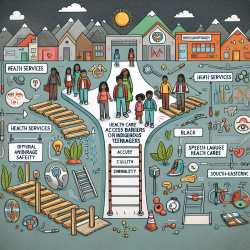Introduction
Indigenous adolescents across Australia, Canada, New Zealand, and the USA face unique challenges in accessing primary health care services. Despite having greater health needs, their access to these services is often limited. A recent systematic review and meta-aggregation of studies has identified key enablers and barriers that impact their access to health care, providing valuable insights for practitioners aiming to improve service delivery.
Key Findings from the Research
The research identified more barriers than enablers to health care access for Indigenous adolescents. These barriers often relate to supply factors such as providers’ competencies, appropriate service packages, and cultural safety. Some of the significant barriers include:
- Embarrassment, shame, or fear associated with accessing health services.
- A lack of culturally appropriate services and environments.
- Concerns about privacy and confidentiality.
On the other hand, enablers that facilitate access include:
- Providers who build trust, respect, and relationships with adolescents and their families.
- Culturally safe environments and care that reflect adolescents' culture and beliefs.
- The presence of Indigenous health care providers and adherence to cultural protocols.
Recommendations for Practitioners
To improve access to primary health care for Indigenous adolescents, practitioners should consider implementing the following strategies:
- Enhance cultural safety by providing training for health care providers on Indigenous cultures and traditional practices.
- Ensure that health care environments are welcoming and culturally appropriate.
- Develop trust and maintain confidentiality to encourage adolescents to seek care.
- Involve Indigenous adolescents in the planning and evaluation of health services to ensure they meet their needs.
Encouraging Further Research
While the study provides a comprehensive overview of the barriers and enablers to health care access, there is a need for further research. Future studies should explore the perspectives of Indigenous male adolescents, younger adolescents, and those in urban settings. Additionally, research should focus on developing and evaluating interventions that address the identified barriers and leverage the enablers.
Conclusion
The systematic review provides crucial evidence for practitioners, organizations, and governments to create more accessible primary health care services for Indigenous adolescents. By addressing the barriers and enhancing the enablers, we can improve health outcomes and ensure that these adolescents receive the care they need.
To read the original research paper, please follow this link: Enablers and barriers to primary health care access for Indigenous adolescents: a systematic review and meta-aggregation of studies across Australia, Canada, New Zealand, and USA.










